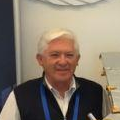Satellite Remotely Sensed Soil Moisture
A special issue of Sensors (ISSN 1424-8220). This special issue belongs to the section "Remote Sensors".
Deadline for manuscript submissions: closed (15 July 2019) | Viewed by 23923
Special Issue Editors
Interests: earth observation; river morphology; near surface geophysics; soil moisture; GNSS-R; water cycle; soil contamination; remote sensing
Special Issues, Collections and Topics in MDPI journals
Interests: remote sensing; water cycle; carbon cycle; wetlands
Special Issues, Collections and Topics in MDPI journals
2. Albavalor S.L.U., University of Valencia Science Park, Valencia, Spain
Interests: remote sensing; soil moisture; earth observation; validation; vegetation biophysical parameters; water resources management and sustainability
Special Issues, Collections and Topics in MDPI journals
Special Issue Information
Dear Colleagues,
Soil moisture is a key component of the water cycle. It is also one of the main actor of the critical zone for conducting climate studies, weather predictions, flood monitoring and aquifer recharge. The different current measurement techniques have a wide range of characteristics in terms of spatial resolution, time resolution and precision. The optimization of one of these three parameters is unfortunately often to the detriment of the other two.
With the advent of remote sensing techniques, soil moisture is measured at a global scale, but to the detriment of temporal and spatial resolutions.
This Special Issue is dedicated to highlight the new downscaling/fusing researches (VNIS, SWIR, thermal IR, GNSS-R) and development of new sensors (from in situ to space-based sensors) for soil moisture retrieval.
Dr. José Darrozes
Dr. Frédéric Frappart
Dr. Ernesto Lopez-Baeza
Guest Editors
Manuscript Submission Information
Manuscripts should be submitted online at www.mdpi.com by registering and logging in to this website. Once you are registered, click here to go to the submission form. Manuscripts can be submitted until the deadline. All submissions that pass pre-check are peer-reviewed. Accepted papers will be published continuously in the journal (as soon as accepted) and will be listed together on the special issue website. Research articles, review articles as well as short communications are invited. For planned papers, a title and short abstract (about 100 words) can be sent to the Editorial Office for announcement on this website.
Submitted manuscripts should not have been published previously, nor be under consideration for publication elsewhere (except conference proceedings papers). All manuscripts are thoroughly refereed through a single-blind peer-review process. A guide for authors and other relevant information for submission of manuscripts is available on the Instructions for Authors page. Sensors is an international peer-reviewed open access semimonthly journal published by MDPI.
Please visit the Instructions for Authors page before submitting a manuscript. The Article Processing Charge (APC) for publication in this open access journal is 2600 CHF (Swiss Francs). Submitted papers should be well formatted and use good English. Authors may use MDPI's English editing service prior to publication or during author revisions.
Keywords
- GNSS-R
- active and passive microwave remote sensing
- thermal imagery
- in situ gauge
- fusing model
- downscaling model
- upscaling techniques
- VNIR
- SWIR
- Multispectral/Hyperspectral imagery
- GRACE
- SMOS
- SMAP
- Sentinel-1








